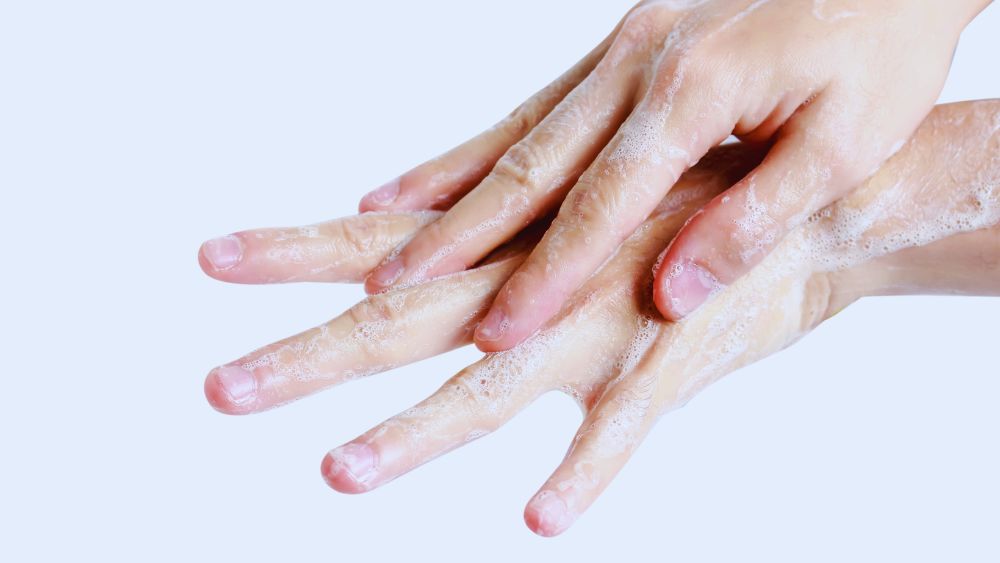
Four steps to proper hand hygiene
What does proper hand hygiene mean and how exactly does it work?
And why is hand disinfection so important anyway?
Around eighty percent of all infections are transmitted directly or indirectly via the hands. Hand hygiene is therefore one of the most important preventative measures to ward off infections.
The four steps to proper hand hygiene consist of washing, hygienic disinfection, skin protection/skin care and wearing gloves and are explained below:
Step 1: Hand washing
By definition, hand washing is the cleaning of hands with soap and water to remove dirt and reduce potential pathogens.
However, because frequent washing destroys the skin's own protective film, the skin dries out. This can lead to skin irritation, which is a gateway for germs.
For this reason, simply washing your hands is not an alternative to hygienic hand disinfection.
Clean hands are a prerequisite for implementing the following hand hygiene steps.
Step 2: Hygienic hand disinfection
The second component of hand hygiene is a process to kill germs using disinfectants.
This process is less harmful to the skin than washing, but lacks the cleaning function.
In addition to alcohol with a disinfectant effect, hand sanitizers contain moisturizing substances to protect the skin.
The effect against viruses is limited, depending on the product.
Hands should be disinfected before and after starting work, contact with patients, going to the toilet and wearing gloves.
Hands should be wetted with the disinfectant for about thirty seconds.
Step 3: Skin protection and skin care
Successful hand hygiene requires measures that maintain or restore the skin's natural protective mechanisms and functions and prevent skin diseases.
For effective and safe hand disinfection, the skin must be in good condition.
In principle, skin protection should be applied before a stressful activity and, if necessary, between tasks and skin care should be applied after activities.
Step 4: Disposable gloves
Disposable gloves are a medical aid, serve to break chains of infection and protect against skin-damaging substances.
As hand disinfection does not result in 100% sterile or germ-free skin, there is always a residual amount of bacteria and fungi.
For this reason, disposable gloves must be worn in certain situations.
They protect patients and staff from infection or protect medicines or food from contamination.
Hand disinfection must be carried out both before putting the gloves on and after taking them off - even if the gloves are sterile. They should be disposed of immediately after use.
Recommended products for this article:
►Step 1 (washing lotion): https://bit.ly/3vV681R
►Step 2 (disinfectant): https://bit.ly/3Xc3wsI
►Step 3 (skin protection/care): https://bit.ly/3ixMSEF
►Step 4 (disposable gloves): https: //bit.ly/3H0WscM
Watch this blog post as a video:
Click here for our socials:
►Website: https://www.lavabis.de/
►YouTube: https://www.youtube.com/@lavabis
►Facebook: https://www.facebook.com/lavabis
►Instagram: https://www.instagram.com/lavabis_com/
►Newsletter: https://lavabis.com/pages/newsletter


